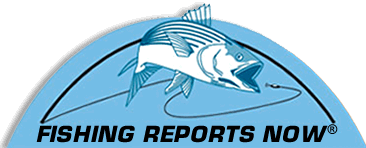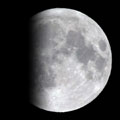Proposed TAL's for 2010:
Slight Increase for Fluke,
Drastic Decrease for Sea Bass
Slight Increase for Fluke,
Drastic Decrease for Sea Bass
Editor's Note: The ASMFC's and MAFMC's proposals for Total Allowable Landings (TAL) are a first step in setting the bag limits for 2010. The proposed TAL will now be submitted to NOAA, and NOAA will make a final decision on them. Then the states will be given the required guidelines, based on the TAL, for setting their respective bag limits.
From the Atlantic States Marine Fisheries Commission:
FOR IMMEDIATE RELEASE, AUGUST 11, 2009
PRESS CONTACT, TINA BERGER, 202/289-6400
ASMFC & Mid-Atlantic Council Approve 2010 TALs for Summer Flounder, Scup, Black Sea Bass, and Bluefish
The Atlantic States Marine Fisheries Commission and the Mid-Atlantic Fishery Management Council (Council) have established the 2010 total allowable landings (TAL) limits for summer flounder, scup, black sea bass, and bluefish. The Commission's actions with regards to all four species are final and apply to state waters. The Council will be forwarding its recommendations to NOAA's Northeast Regional Administrator for final approval. The table below summarizes those actions/recommendations (TALs and recreational harvest limits are in millions of pounds):
TAL |
Commercial Quota |
Minimum Fish Size (TL) |
Mesh Size |
Recreational Harvest Limit |
|
Summer Flounder |
22.13 |
13.28 |
14" |
5.5" |
8.85 |
Scup |
13.5 |
10.53 |
9" |
5" |
2.97 |
Black Sea Bass |
2.3 |
1.13 |
11" |
4.5" |
1.17 |
Bluefish |
29.26 |
4.97 |
--- |
--- |
24.29 |
The Commission and Council approved an increase in the 2010 summer flounder TAL by 3.68 million pounds when compared to the 2009 quota level. This results in a commercial quota of 13.28 million pounds and a recreational harvest limit of 8.85 million pounds for the 2010 fishing year. This action was consistent with the recommendations of the Scientific and Statistical Committee (SSC) and monitoring committee regarding acceptable biological catch (ABC).
For the 2010 scup fishery, both the Commission and Council set a TAL of 13.5 million pounds, an increase of 2.32 million pounds compared to 2009. Based on the recommendations of the SSC and monitoring committee regarding ABC, the Commission took a precautionary approach in setting the scup TAL in light of the scientific uncertainty surrounding the new scup assessment model, which is a significant departure from previous scup assessment approaches. Specifically, the sensitivity and reliability of the new model is not fully understood, there is uncertainty about the dynamics of older fish in the stock (current surveys do not do a good job of capturing fish older than age 2), and poorly estimated discards, which are a significant component of fishing mortality.
Following the SSC's ABC recommendation, both the Commission and Council maintained a 2.3 million pound TAL for 2010 black sea bass fishery. As with scup, the Commission took a precautionary approach in setting the black sea bass TAL due to concerns regarding scientific uncertainty in the new assessment model. These include the sensitivity and reliability of the new model, the uncertainty inherent in assessing a species with an unusual life history (some females change sex to become males), the presence of a retrospective pattern which tends to overestimate stock size, and the adequacy of fishery-independent surveys in sampling this species.
The Commission and Council adopted a bluefish TAL of 29.26 million pounds for 2010, which is a small decrease from the 2009 TAL of 29.36 million pounds. The 2009 stock assessment update indicates that projected stock biomass for 2008 is at approximately 111 percent of its rebuilding target and, therefore, is considered rebuilt. The original stock rebuilding deadline was 2010. Under the current fishery management plan, the commercial fishery will be allocated 4.97 million pounds and the recreational sector will be allocated 24.29 million pounds. Later this year when recreational landings are available, the commercial sector could receive a transfer of up to 5.39 million pounds in quota. In recent years recreational landings have increased, but the overall TAL for the fishery has not been exceeded. This action was consistent with the recommendations of the SSC and monitoring committee regarding ABC.
The Commission and Council maintained the 2009 commercial management measures for all four species for 2010 and approved a Research Set-Aside (RSA) quota of up to three percent for each fishery. RSA quota allocations will reduce the above TALs and related allocations, and will be adjusted as appropriate for 2010 prior to the start of the new fishing year. For more information, please contact Toni Kerns, FMP Coordinator, at (202) 289-6400 or <tkerns@asmfc.org>.
###
*************************
Tina Berger
Public Affairs Specialist
Atlantic States Marine Fisheries Commission
1444 I Street. NW, Sixth Floor
Washington, DC 20005
Phone: (202)289-6400
FAX: (202)289-6051
Email: tberger@asmfc.org
www.asmfc.org
ASMFC Vision: Healthy, self-sustaining populations for all Atlantic coast fish species or successful restoration well in progress by the year 2015.





